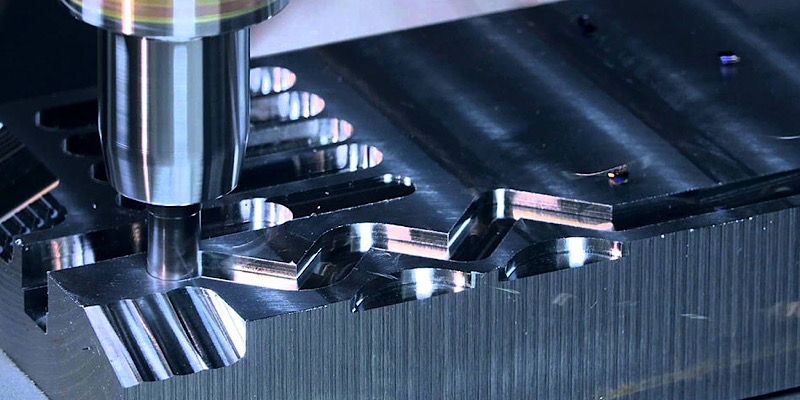Posted on Agust. 26th, 2020, | By WayKen Rapid Manufacturing
CNC milling is one of the most commonly used methods of processing parts when you need a high-precision component manufactured. Modern CNC milling tools offer great opportunities for creating freeform complex surfaces fast. They have also developed into high-precision machines so you can get mirror-like surface finishes if you use them correctly. Machining is a trade that you learn your whole life though and there are a lot of issues that can ruin your workpiece or even your cutting tool if you don’t know how to prevent them. We’ve listed the most common defects in a CNC milled workpiece while providing corresponding solutions to fix them.
1. Dents Left From The Tooling After CNC Milling
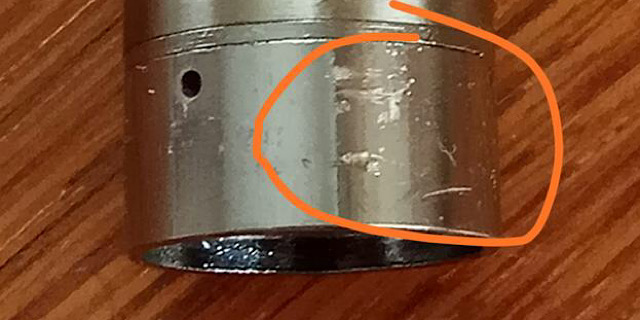
Defect
When machining brass, copper, bronze, or aluminum alloys, you may sometimes notice that the part has dents where it was clamped during the CNC milling process.
Cause
This occurs due to excess clamping forces in your tooling. If your tooling is manual, meaning, you have to take a wrench and fasten the screws on the jigs and fixtures, the solution is easy. You can simply stop fastening the jigs earlier or purchase a special key that tells you how large the clamping force is at each moment so you can control the clamping force better. However, a lot of CNC machines are mounted with pneumatic or hydraulic cylinders for constant clamping forces. They are usually larger than manual clamping forces as well.
Solutions
The cheap solution to prevent dents in parts clamped by pneumatic and hydraulic tooling is quite simple. You should make an intermediate steel plate and put it between your workpiece and the tooling jigs. The plate is used to spread the pressure on the workpiece evenly and increase the contact area. That prevents deformations. Even if the clamping force is still too large, the dents will be on the plate and not the workpiece.
Another solution is to purchase special chucks and jigs that are softer and even if deformation occurs, they won’t damage the workpiece. Also, if you want to know more about more solutions to fix various dents, you can visit our core technology page: aluminum CNC machining.
2.Varying Surface Finish On a Single Surface
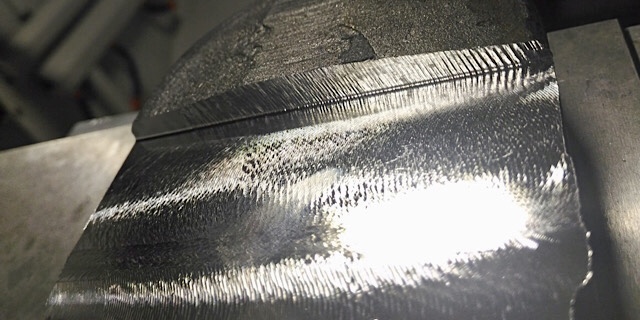
Defect
One of the common issues, when CNC milling is used, refers to surface finish. There are a number of causes for a bad or varying surface finish on a workpiece.
Causes
The first reason is chatter. That term refers to excess vibration in the machine tool or the cutter. As a result, you will get an uneven ruined surface instead of a smooth one. There are a few reasons for chatter, the first of them being a blunt tool. A blunt cutter deforms the workpiece much more before the chip is detached from the main part. This results in added cutting forces and the cutting edge entering the part deeper as the deformation builds up and then the chip breaks off abruptly, leaving a small hole. A number of those on the surface makes the surface finish much lower.
Another reason is the CNC milling strategy. There are two types of milling strategies: climb and conventional. The first strategy is when the direction of the cutter revolution coincides with the direction of the work table feed. With climb milling, the tool enters the workpiece with a hit and exits the workpiece slowly with minimum material (at the surface that is created after machining). That results in a great surface finish. Conventional milling occurs when the revolution and the feed directions are opposite. That way the tool enters the workpiece from the finished surface. Due to slight vibrations and process variations, the tool can damage the finished surface slightly. However, that is enough to change the final surface finish. New machinists often accidentally use both strategies by planning the tool to move back and forth. This results in the surface having both types of surface finish. Smoother on one path and rougher at the next one.
The last reason for the faulty surface finish is a poor choice or lack of coolant. A lot of people underestimate the role of coolants and lubricants and ignore them or use the simplest and cheapest ones. In reality, using a fitting coolant lubricant can raise the quality of the surface by a whole class. The opposite is possible of course. Lack of cooling and lubrication leads to overheating, shorter tool life
Solution
In order to keep the surface finish as smooth as possible, you should maintain the cutting tool, use the correct strategy, and be mindful of the coolant. In general, it is much better for the tool to always enter the workpiece from one side and exit from the other.
3. Burns On The Surface Of The Workpiece
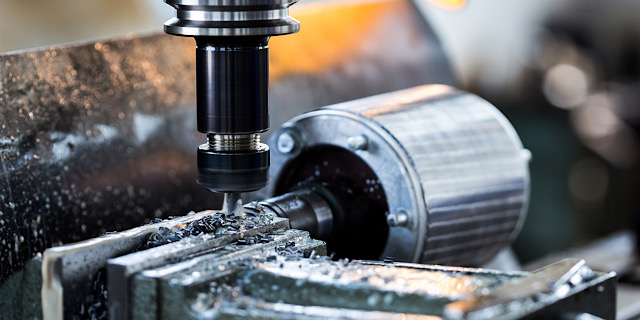
Defect
One common defect for such an error results in burns along the surface of the machined part. The burns mean that the workpiece overheated.
Cause
Wrong cutting parameters can result in workpiece defects. A poorly chosen combination of feed and speed may result in significant damage to the workpiece, the cutting tool, and even the machine tool itself.
Solution
One way to fix the issue is to lower the cutting speed to feed ratio. The machining process will become slower and the temperature – lower. Another way is to improve the cooling rate of the process. In some extreme cases, like titanium that conducts temperature poorly, both methods are necessary.
4. Burrs
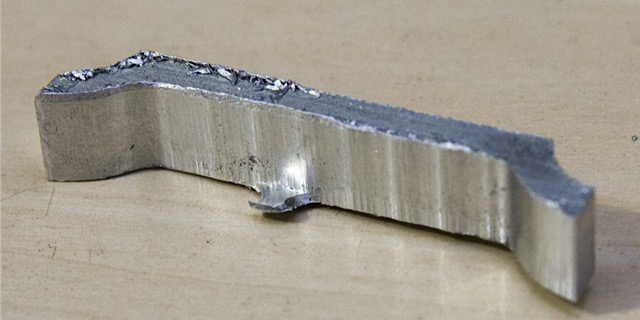
Defect
Burrs are leftover material that remained after the cutting process. The most common burrs form at the bottom edges of the part during drilling or milling. They are more common for materials with good plasticity and low hardness.
Cause
The last layer of the material often deforms and moves away from the cutting tool and it becomes impossible to remove with the part in the same position. The deformed material remains on the part as a thin film at the edges. It is sharp and must be removed.
Solution
Deburring is a process of removing the burrs and is actually a whole chapter of mechanical engineering and machining. There are multiple ways to remove burrs. The simplest way is to remove burrs manually but there are also advanced deburring techniques such as thermal and vibratory deburring.
Conclusion
As you can see, CNC milling is a complex craft. People master it for decades and still make mistakes sometimes. You can easily ruin your part having invested a lot of time milling and money purchasing the material. A much better option would be to order professional CNC milling surfaces. A group of qualified machinists who work every day on the same machine is sure to process your part without any defects or blemishes.
Your Needed CNC Milling Solutions
At WayKen, we have created an in-house environment of extreme accuracy. Also, assured that our ISO 9001 certified CNC milling services also can support your important projects when you upload your CAD file for free quotations there. If you want to know more, please don’t be hesitate to contact our team: [email protected].
If you’re interested in learning more about our CNC milling tips, here are some related articles for you:

